
Suppose we could set the WayBack Machine for 4.5 billion years ago, as the gas and dust in the proto-solar nebula was beginning to clump into proto-planets...

Image Credit: C. A. Grady et al. (NOAO, NASA/GSFC), CTIO, ESO, NSF; see Astronomy Picture of the Day, May 2, 2001, for more details.
There is some evidence that the the proto-Earth collided with another planetesimal, perhaps the size of Mars. Some of the material blasted outwards in the collision clumped together under its own gravity to form a body in orbit around the remaining proto-Earth -- a body we call the Moon.
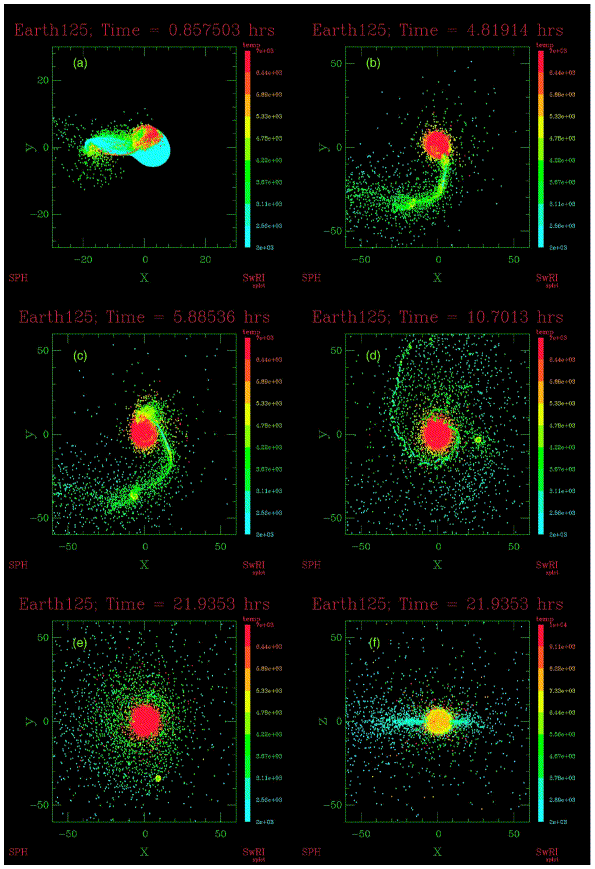
Figures taken from Simulations of a late lunar-forming impact by Robin Canup, Icarus, Volume 168, Issue 2, p. 433-456.
You can read more about the impact hypothesis of the Moon's origin at these sites:
But -- what if we were wave our magic wands and prevent any such moon-producing collision? What if the Earth had formed all by itself, without a Moon? How would the subsequent evolution of the Earth, and life upon it, been changed?
I will consider a number of consequences, starting with very definite and uncontroversial ones, then working my through to some which are more speculative. As you will see, there was been a great deal of thought and discussion of these ideas by many people over the past century; I am merely collecting them.
When the Apollo astronauts and the Russian Lunakhod rovers visited the Moon, they left behind several special "retroreflectors": sets of cubical mirrors which are designed to reflect light directly back in the direction whence it came.
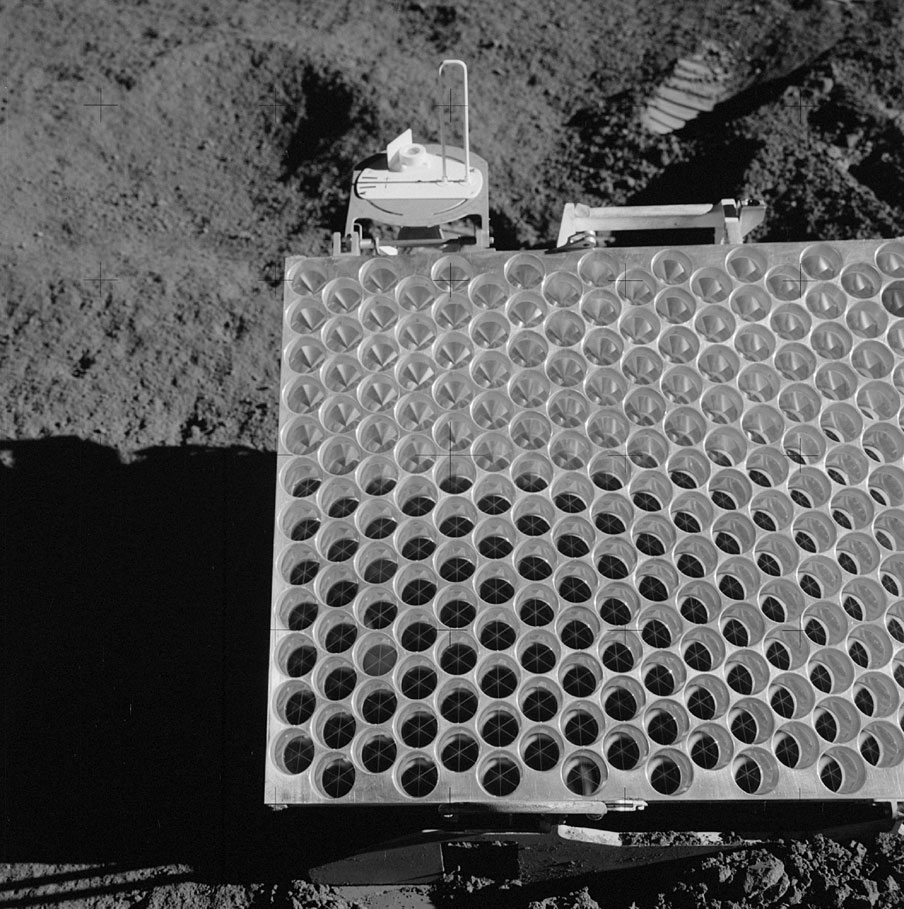
Several observatories on Earth, such as the McDonald Observatory in Texas
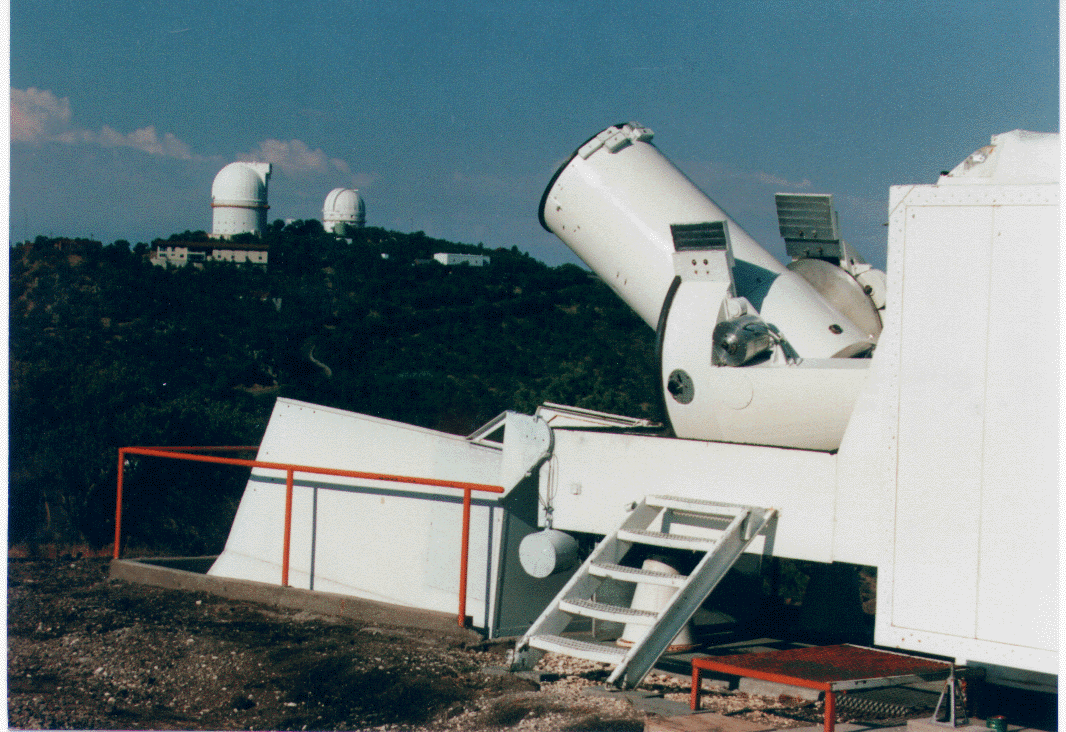
shine pulses of light from powerful lasers at these retroreflectors, then look carefully for the (very few) returning photons. The time it takes for light to make the round trip provides scientists with a precise measure of the distance between the Earth and Moon. With care, the distance can be measured VERY precisely. The table below shows the error budget for the measurement of a single photon; typical experiments detect tens or hundreds of photons.
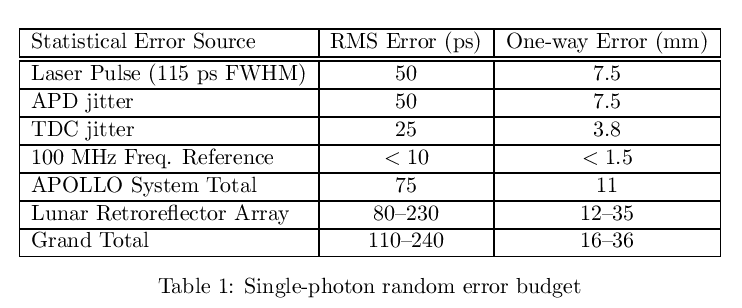
Over the past few decades, lunar-ranging measurements have shown that the semi-major axis of the Moon's orbit is slowly increasing, by 3.82 +/- 0.07 cm/year (Dickey et al., Science 265, 482 (1994)). Why should that be happening -- and what effect might that have on the Earth?
The answer involves tides. Tides are bulges one body caused by the gravitational pull of an external body; or, more precisely, caused by the DIFFERENCES in the gravitational pull of an external body. Consider the Earth, its oceans, and the Moon.
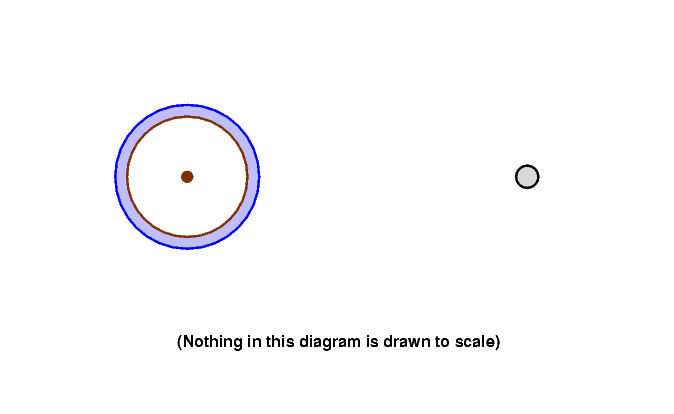
The strength of the gravitational force decreases as the square of the distance between two objects. So the Moon pulls just a bit harder on the near side of the ocean than it does the center of the Earth ... and just a bit harder on the center of the Earth than on the far side of the ocean.
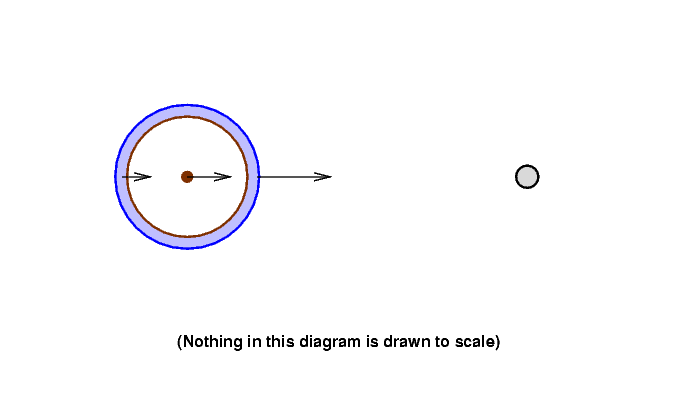
These slight differences in gravitational forces pull a blob of water outwards away from the Earth on side nearest the Moon; and they pull the Earth away from the blob of water which is on side farthest from the Moon. The net result is to deform the oceans into a somewhat oval shape.
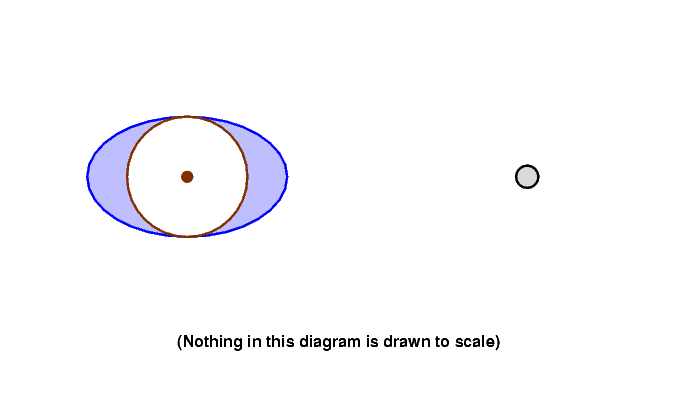
Now, if we were to hold the Earth and Moon fixed in place (with some very strong pieces of string, perhaps), then that would be the end of the story: a stationary tidal bulge would point towards the Moon. People on vacation might travel to the portions of the world under the bulge to swim in a very slightly deeper ocean.
However, the Earth and Moon are not fixed in place. They are instead dancing together in a three-part manner:
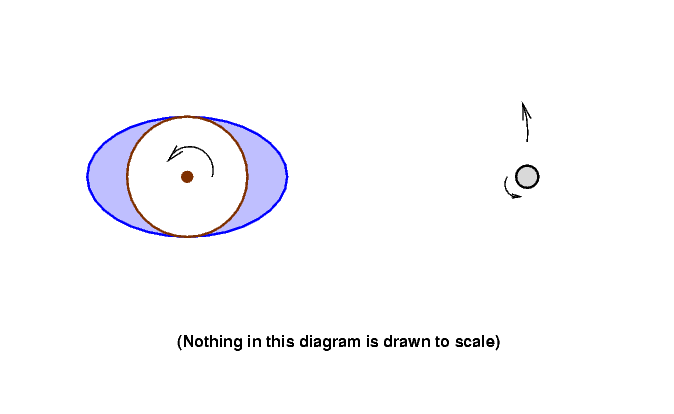
Because the Earth rotates so quickly, friction between the ocean floor and the water drags the tidal bulges forward a bit, so that they "lead" the Moon slightly.
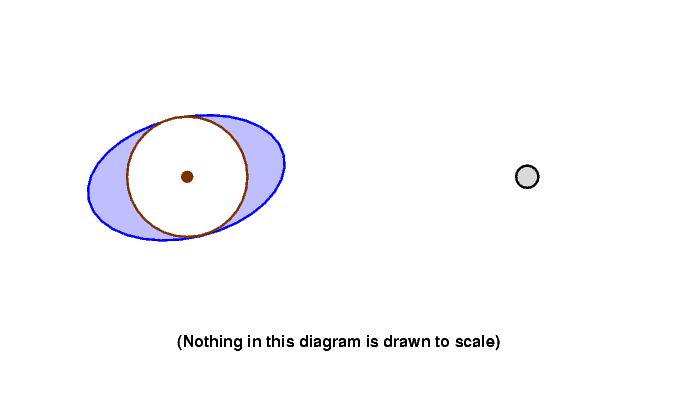
Let's simplify things, since it will make the diagrams to come easier to understand. We'll put a dot in each of the tidal bulges, and pretend that all the mass of the water in each bulge is concentrated at that point.
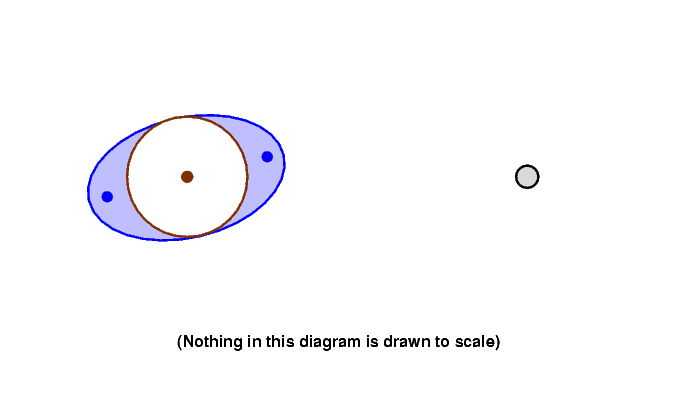
The water in each of the ocean bulges exerts a gravitational force on the Moon. The near-side bulge pulls the Moon in a direction which is slightly tilted in the direction of the Moon's orbital motion, while the far-side bulge pulls the Moon very slightly backwards, opposite to its orbital motion. But because the near-side bulge is closer, its pull is a bit stronger. The total force from the ocean water has a small component which pulls the Moon forward along its orbit, speeding it up very slightly.
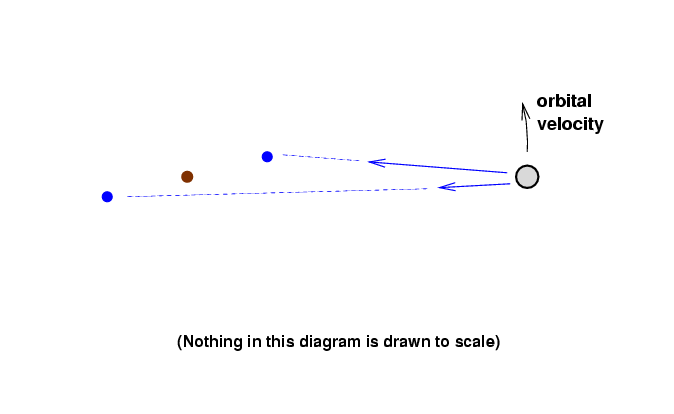
Because the net tidal force pulls the Moon forward in its orbit, it increases the Moon's orbital speed; that increase in speed causes the Moon to shoot ahead a little faster and overshoot its circular orbit. It ends up a bit farther from the Earth, in a slightly larger orbit.

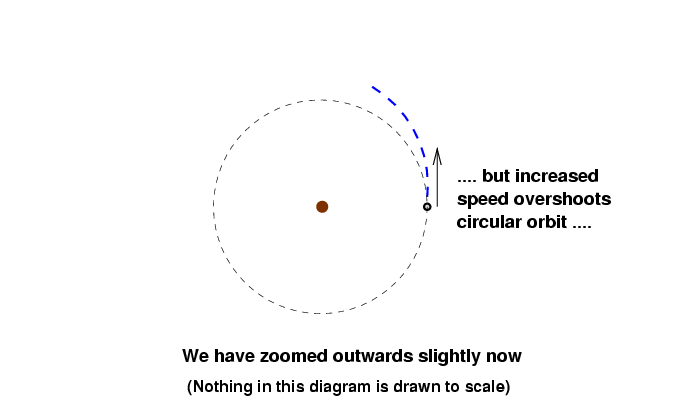
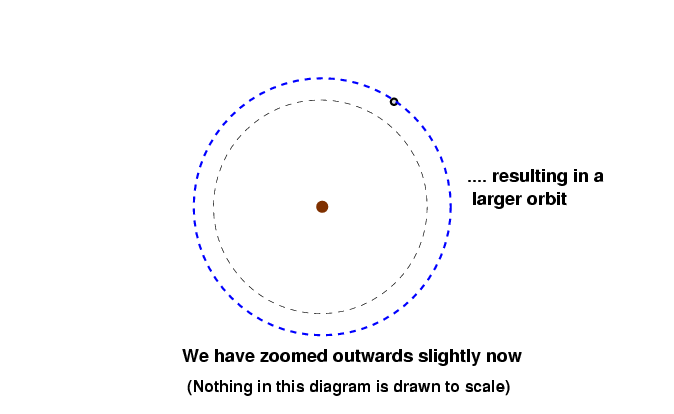
In its new, larger, orbit, the Moon takes LONGER to complete one revolution around the Earth; this may seem a bit counterintuitive, since it was a component of gravitational force forwards along its orbit that started the whole process, but the increase in gravitational potential energy as the Moon recedes from the Earth leads to a decrease in kinetic energy.
Okay, so the Moon recedes from the Earth -- but what about the Earth? Does anything happen to IT due to these tidal interactions? Yes, indeed. Look again at the misaligned tidal bulge of the oceans:
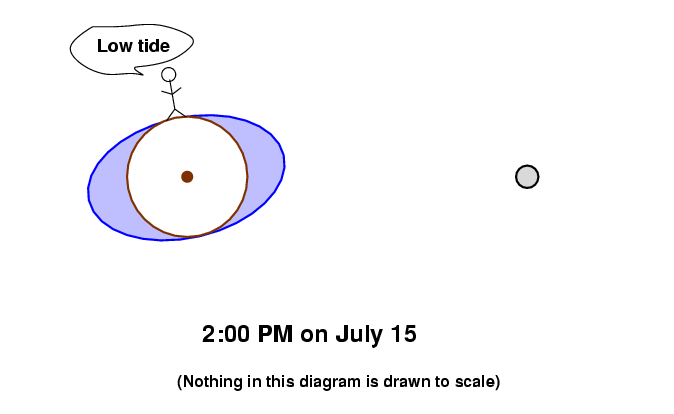
Over the course of the next 18 hours, the Earth rotates over three-quarters of a full circle, but the Moon moves through only a tiny fraction of its orbital circle. Since the tidal bulges track the Moon, they, too, stay nearly in place.
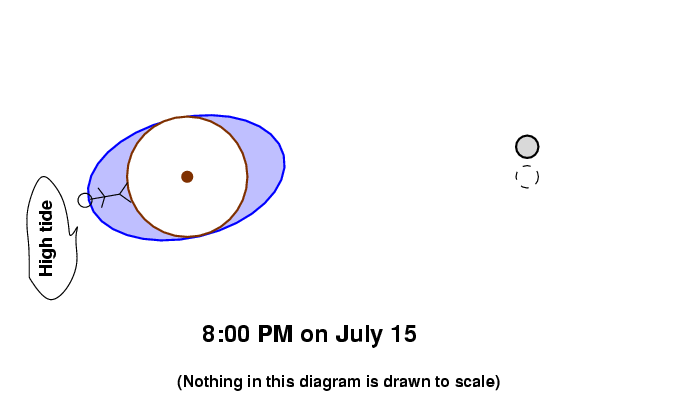
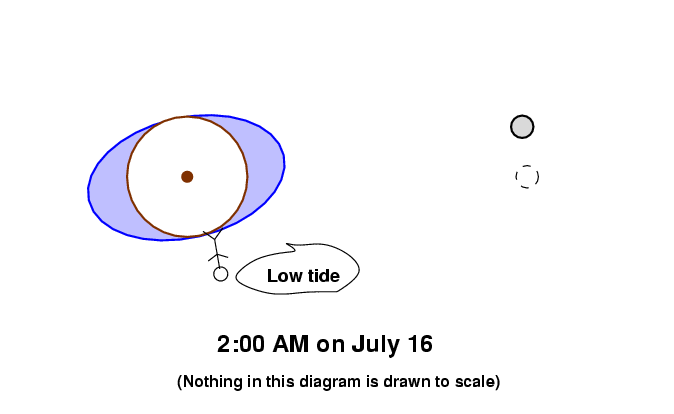
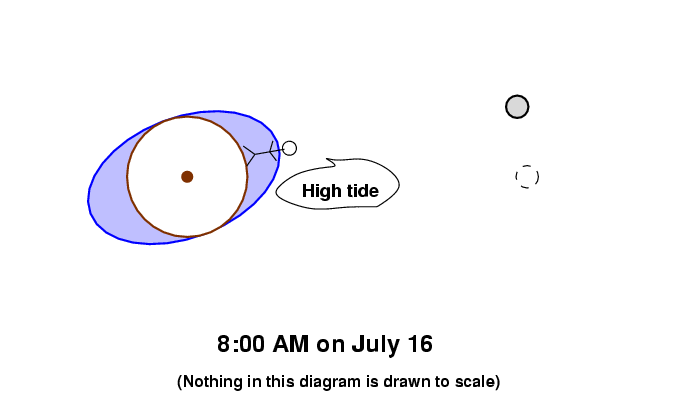
The Earth rotates UNDERNEATH the tidal bulges, moving much more quickly than they do. The friction between the solid body of the Earth and the waters of the ocean acts to slow down the Earth's rotation (this is quite a simplification -- read this paper on tides and friction for more details). So the Earth's period of rotation grows just a little bit longer ... very slowly.
To sum it up,
If you wish, you may use the conservation of angular momentum to determine how these two changes are connected. The total angular momentum of the Earth-Moon system remains the same: the Earth's spin angular momentum decreases as the Moon's orbital momentum increases.
Our measurements of the increase in the Moon's orbital radius (about 3.8 cm each year) can be turned around to yield the rate at which the Earth's rate of rotation is decreasing. That turns out to be about 2.3 milliseconds added to a day, over the course of a century.
At the present time, the small overall increase in the length of a day doesn't seem very important. Very few people pay much attention to the occasional leap seconds which are inserted into the official time systems. Over the course of an entire human life, days grow longer, on average, by about the duration of one flap of a honeybee's wings.
But if one is patient enough, this very slow rate can add up to quite a large change. For example, a perfect clock which was started from "12:00:00" in the year 1000 BCE when the Sun was directly overhead, would at the present time show the Sun to be overhead about half an hour after 12:00:00. The Earth, in other words, should have "lost half an hour" over the past millenium.
Well, that's the theory, anyway. Is there any evidence for it?
Yes!
We have records of eclipses which took place thousands of years ago. This bit of cunieform, for example,
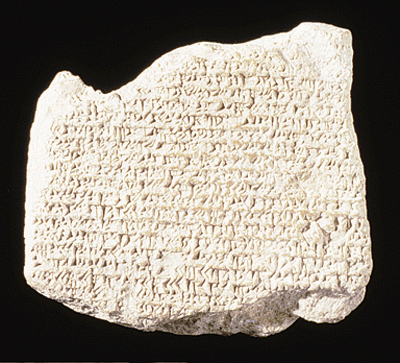
See
Historical eclipses and Earth's rotation
by Stephenson, in Astronomy and Geophysics, Vol 44, page 2.22 (2003).
describes a total solar eclipse which occured on April 15 in the year 136 BCE. This bit of calligraphy

See
Historical eclipses and Earth's rotation
by Stephenson, in Astronomy and Geophysics, Vol 44, page 2.22 (2003).
is a Chinese record of a lunar eclipse of September 4/5, 434 CE. Without the slowing of the Earth's rotation, these eclipses could not have been seen at the locations and times described in the records; the eclipse paths would have been shifted by hundreds or thousands of miles.
Another sort of evidence comes from fossils of marine creatures and algae. Some well-preserved specimens show regular patterns of striations or lines which occur in groups. Similar patterns in living creatures can be caused by material deposited on a cycle of length one month, influenced by the change in ebb and neap tides (cycles of other lengths also occur). If we interpret some of the fossil patterns to indicate monthly changes, and others to represent annual changes, we can figure out how many months occur over the course of a year. Since the length of the year has certainly not changed appreciably over geologic time, we can attribute changes in these patterns to a change in the length of the month over times in the geologic record.

Figure taken from
Paleontological Evidence on the Earth's Rotational History
Since Early Precambrian
by Giorgio Pannella, Astrophysics and Space Science, Vol. 16, p.212 (1972).
Over the course of millions of years, the change in the length of the Earth's rotation amounts to many hours. The earliest evidence mentioned in Pannella's paper dates from about 1.8 billion years ago, and suggests that there were about 450 days in the year at that time. That means that each day was only about 20 hours long. Extrapolating to earlier times is difficult, since there are interactions between the locations of the continents, the shape of the oceans, and the efficiency of tidal friction. Nonetheless, it is possible that the very young Earth may have had a rotation period of less than 10 hours.
Okay, that was a long introduction, but, now that we know what sort of influence the Moon has had on the Earth, we can finally start to answer the question "What would the Earth be like if it didn't have a Moon?"
For one thing, it would probably be rotating more rapidly. The Sun, it is true, does cause tides of its own in the Earth's oceans, but its tidal effects are weaker than those of the Moon. If the initial rotation period of the Earth was, say, 6 hours, then without a Moon, it might have slowed due to solar tides to only, say, 10 hours. What consequences might follow from such a fast rotation?
Perhaps the Earth's atmosphere might show some differences.
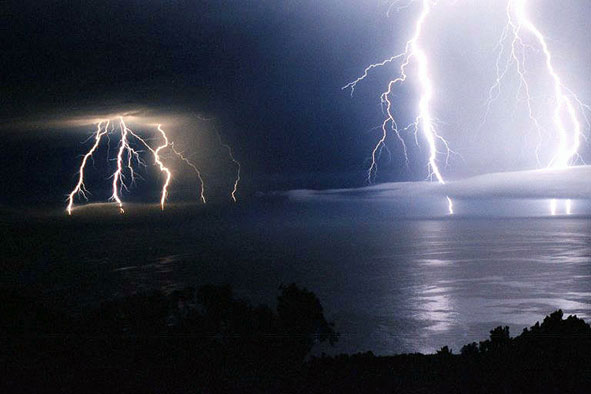
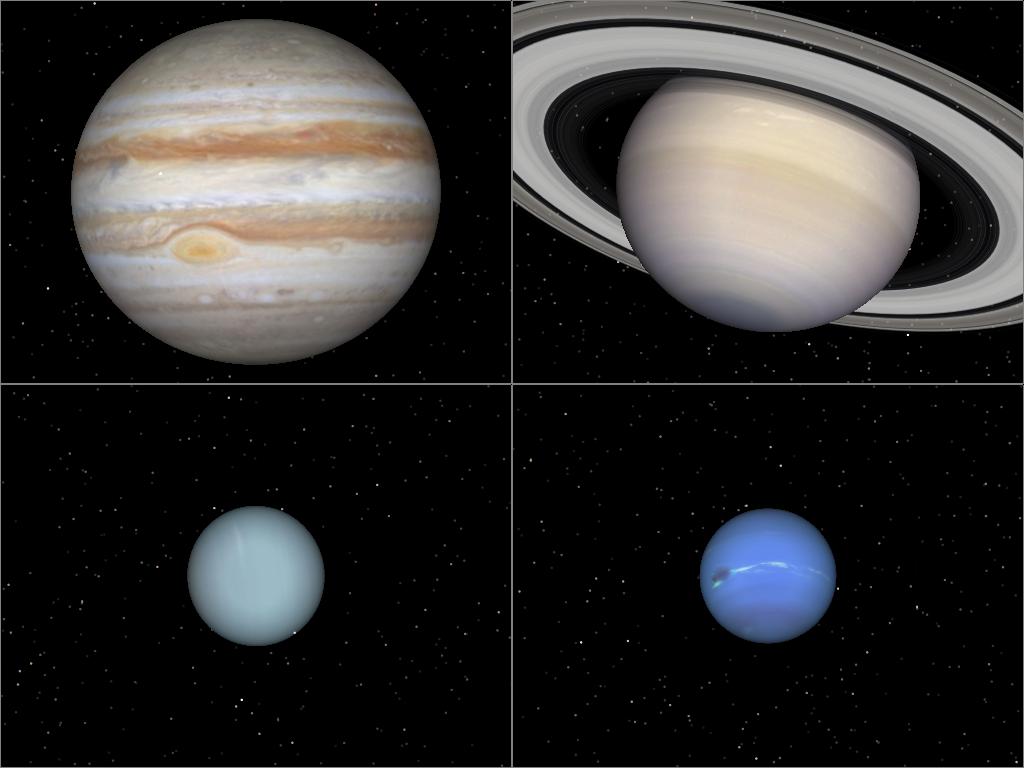
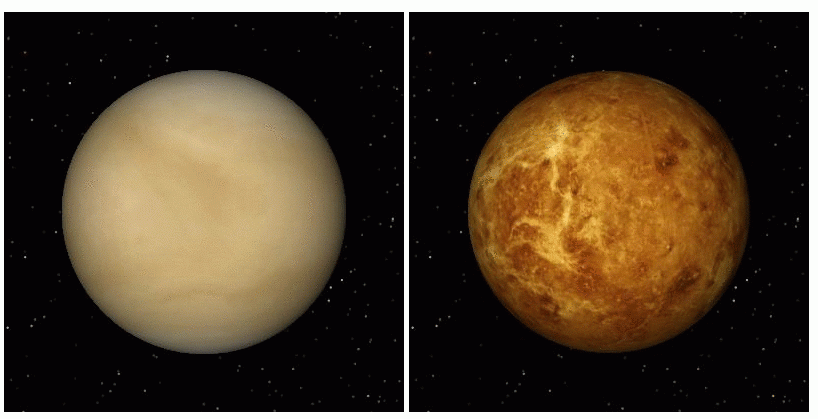
It has been postulated in the past by some that the Moon might be somehow responsible for the lack of a similarly thick atmosphere around the Earth. I do not understand the mechanism by which the Moon would remove most of the atmosphere, or prevent its generation via outgassing, so I give this idea little weight. It certainly is a Good Thing that our Earth does not have a Venus-like atmosphere, with its immense pressure (90 atm at the surface) and strong greenhouse effect (leading to temperatures over 700 Celsius).
As mentioned earlier, without the Moon, tides would be weaker than they currently are. Instead of advancing and retreating across the sands by tens of meters, the ocean waters might only oscillate by a few meters. That, in turn, would create many fewer tidal pools.

Some people believe that tidal pools, with their combination of shallow, still water, plenty of sunlight, and regular influx of fresh materials, plus evaporation to concentrate the brew, might have provided the environment in which some of the first forms of life on Earth might have developed. With fewer tidal pools, would the earliest, simplest self-replicating molecules have formed in just one or two billion years?
Recent work on the formation of life on Earth has moved in a different direction, actually. The current "favorite" location for the formation of the earliest life is somewhere deep in the oceans, near a hydrothermal vent.
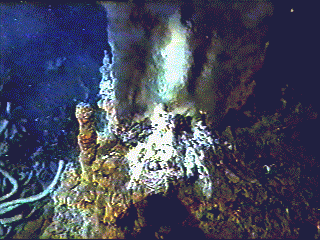
If this is true, then the lack of a Moon would not have discouraged the earliest forms of life on Earth.